Episode 3 of The Rings of Power picks off where episode 2 left off, with Galadriel and Halbrand on board the ship that discovered them, castaways, at sea. It is revealed that this ship is a part of the kingdom of Nmenor, which was established by the Men of Edain, who helped the elves of Valinor during the War of Wrath at the final moment of the First Age. Nori and her family are still dealing with the stranger who appeared out of nowhere in The Rings of Power episode 1, while Arondil finds himself captured by orcs in the Southlands and made to dig tunnels beneath the earth.
There are a lot of The Lord Of The Rings easter eggs and references in Rings Of Power Episode 3, and I’m not kidding when I say “a lot”. Like we were taken through the beautiful caves of Khazad-dûm in episode 2, in episode 3 we witness the glory and magnificent land of Númenor. Númenor is filled with a lot of important statues, stories, and symbols. And it is Númenor where most of the Rings Of Power Episode 3 Easter Eggs are present.
Here are the Rings Of Power Episode 3 Easter Eggs:
Orcs Hates Sunlight
As we’ve been told, the orcs being harmed by sunlight is going to be a big deal in this series. We’ve seen the lands that will become Mordor don’t look anything like the desolate wasteland they are in the Lord of the Rings, so the orcs aren’t protected from the sun. This is why Uruk-hai are such a big deal during the War of the Ring – they don’t have this weakness of regular orcs when it comes to sunlight. And while Arondir is drifting into consciousness, we get a quick glimpse of two orcs running down a tunnel, and the second one who looks much smaller turns around and looks.
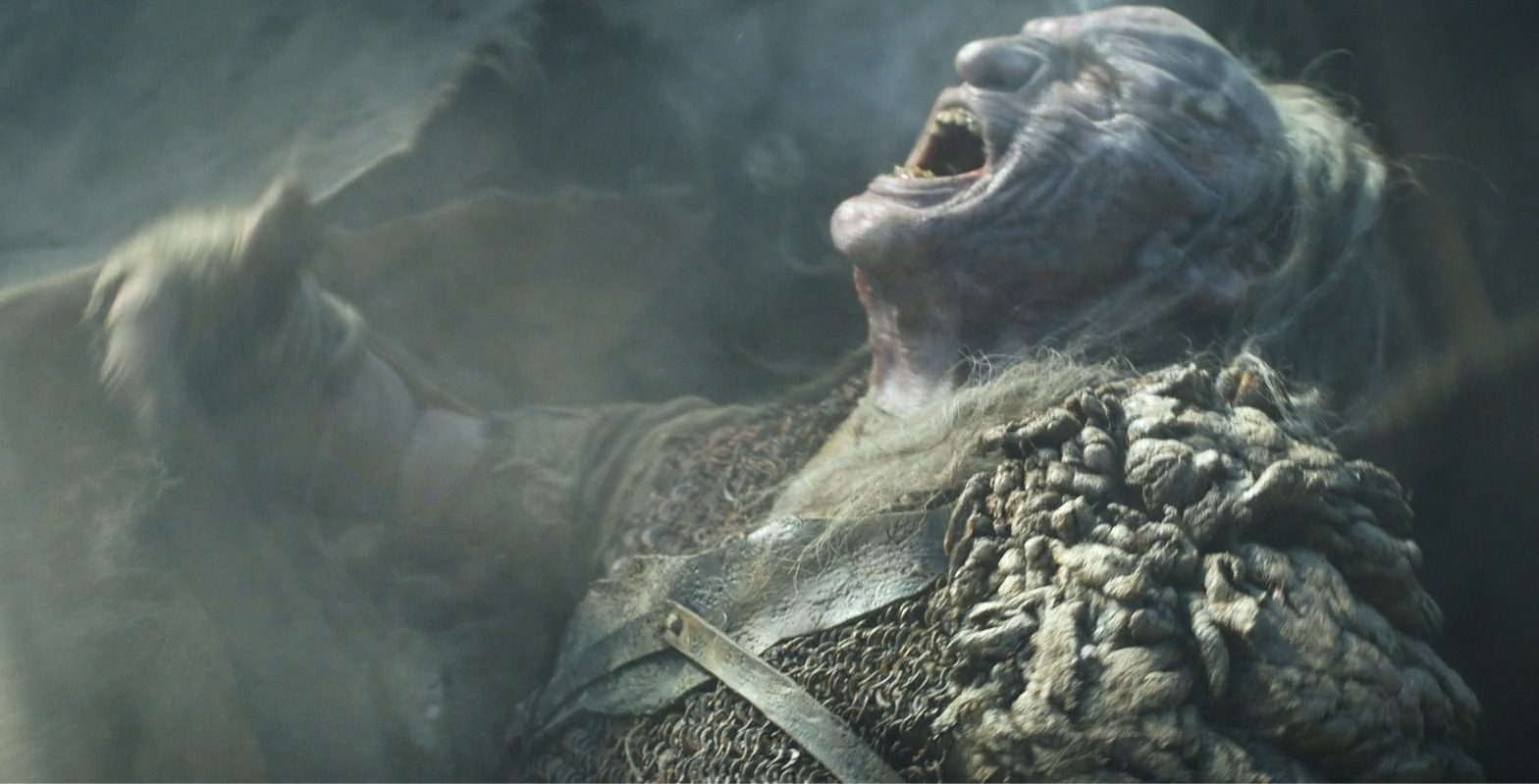
I can’t help but wonder if there’s some significance here either with this orc or the fact that there’s this side tunnel. While you could say they’re making the tunnels for the purpose of staying out of sunlight, I can’t help but think it would be much quicker to just travel at night and take shelter during the day. It makes me wonder if there’s more to these tunnels than just a way to stay out of the sun – maybe they’re using it to transport something in secret across the lands – hard to say at this point.
Jed Brophy Orc
And right away we have the triumphant return of fan-favorite actor Jed Brophy to the world of Middle-earth. If you don’t know him by name, you certainly know his work as he played Nori in The Hobbit and a variety of memorable characters in The Lord of the Rings. It’s definitely fun to see him back in Middle-earth and I hope we see more of him going forward. His orc here is named Vrath and we hear him talk back to another orc saying “You toss him out with the rest. I had sun duty yesterday.”
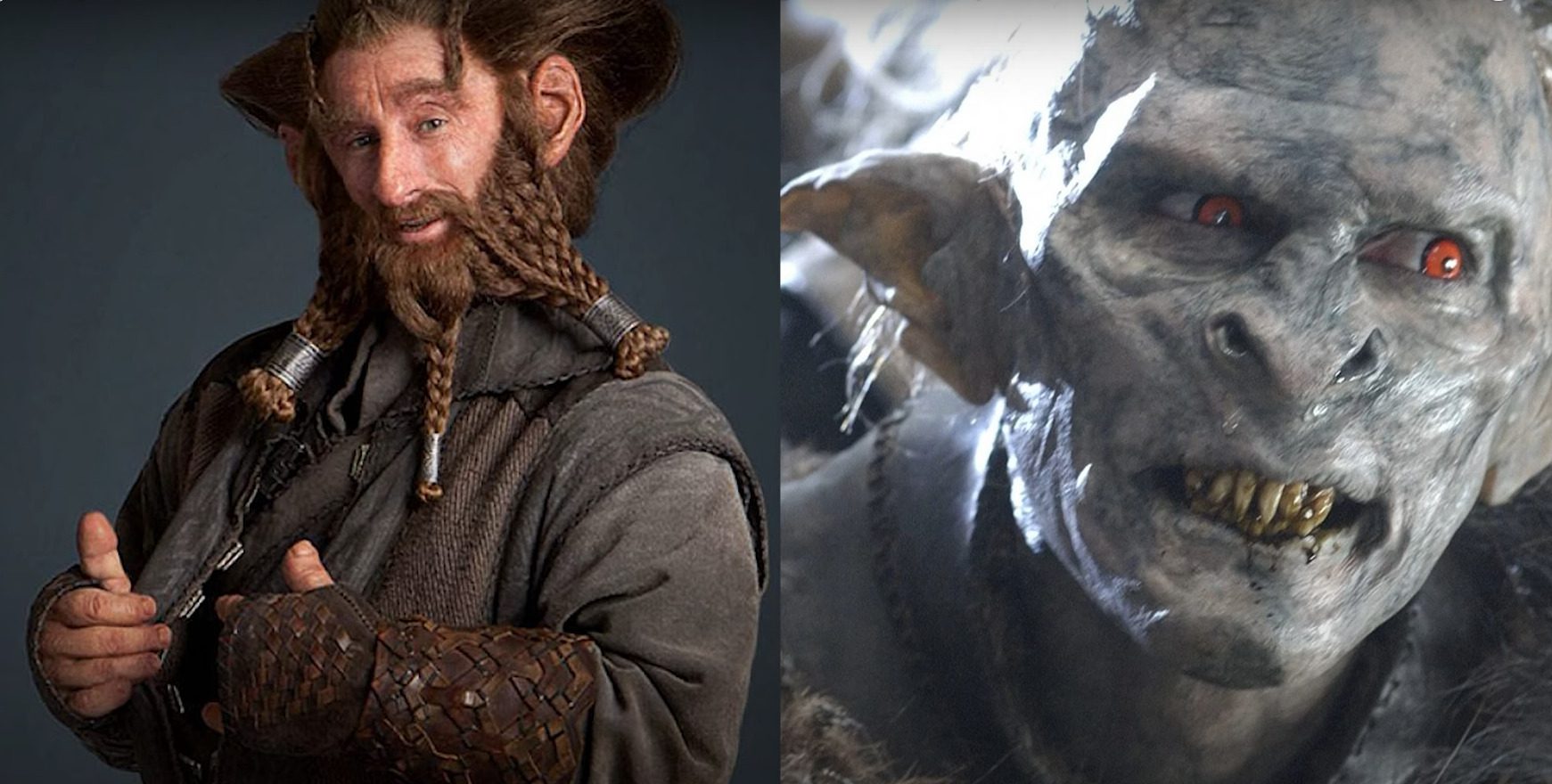
So right away we know the orcs take turns being the ones out in the sun, and when they are, they cover up in skins and skeletons of other creatures to protect themselves. And even then, they run under cover when the full sun hits. Vrath comes up to Arondir and says “for Adar”, which is the title of this episode and the name of the leader of the orcs.
The Numenor Statues
As the ship approaches a gateway of the island realm, we start to hear Bear McCreary’s Numenor track. And the watchtower to the side ignites a flame. No doubt this is a small connection to the beacons of Minas Tirith used to communicate between Gondor and Rohan in the Third Age. As the ship passes through faces carved in the rock, we see a waterfall emitting from a statue of a figure alongside horses. As we will see later in the episode, the Numenoreans have a deep connection to the sea, which solidifies in my mind my theory that this is a statue of the Vala Ulmo – the Lord of Waters.
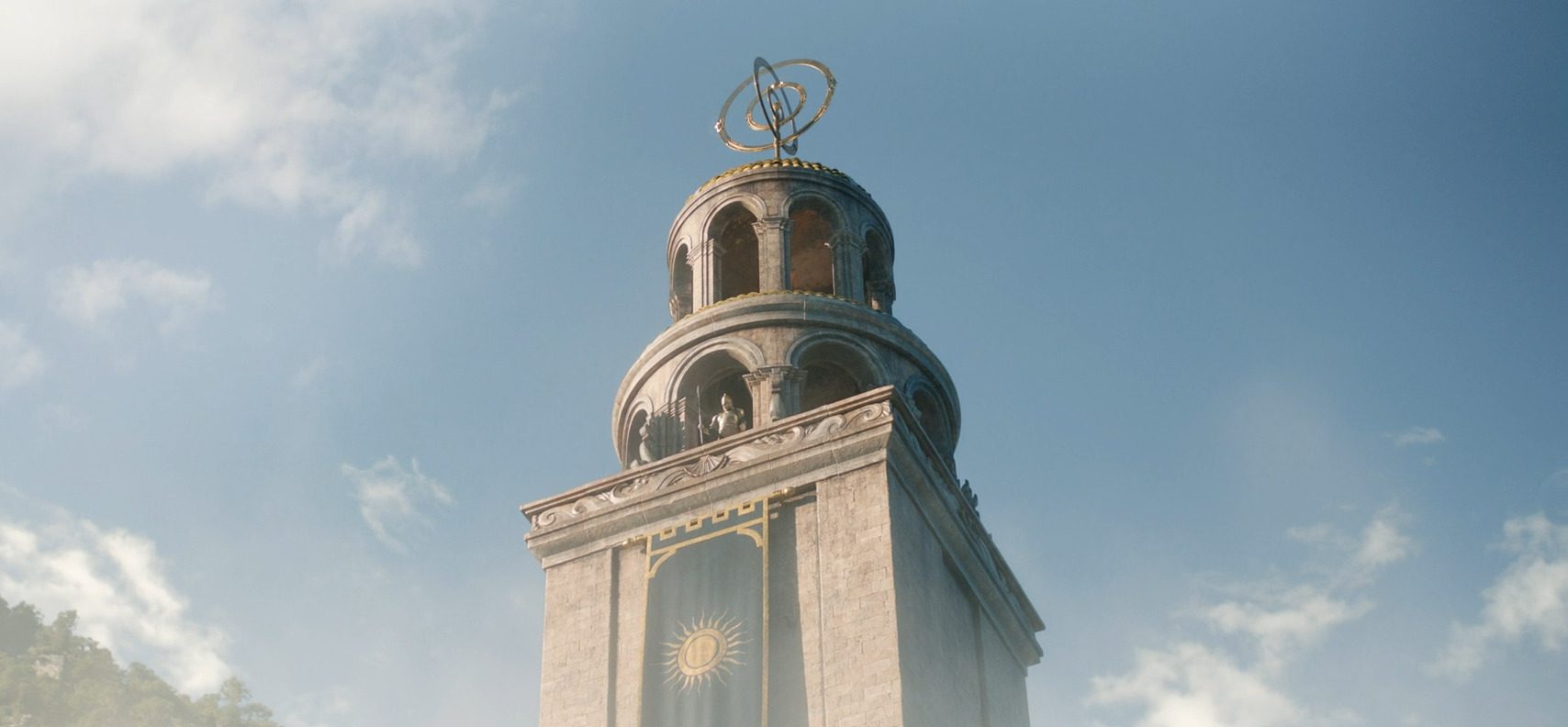
In the entry shot, we see another fire lit atop a tower, perhaps connected to the other one we saw if they are indeed beacons. The centerpiece is the statue of Earendil – the father of Elrond and his twin brother Elros. Elros chose to be a mortal man and was Numenor’s founder and first King. Alongside Earendil we see a bird, which is actually a depiction of Elrond and Elros’ mother Elwing, when she was temporarily given bird form. Earendil has one of the silmarils upon his brow and during the war of wrath (which was somewhat depicted in the prologue sequence).
Earnedil flies in his ship to fight the dragons of Morgoth. Ever afterward, he sails the skies as a star – which will actually come up again in this episode – and much later, it is the light of this star that Galadriel has within her phial she gives to Frodo. Also, in this same shot, we see the Mountain of Meneltarma. This is a holy mountain for the Numenoreans and will likely be an important location before the end of this series.

The Earendil’s statue calls to mind the Argonath, yet whereas the Argonath has their arms out in defiance of their enemies, Earendil seems to be making a gesture of welcome. Next, we have an incredible wide shot showing just how massive the capital city of Armenelos is. We can also see a bit of similar architecture in the main building as it has a bit of a resemblance to the later city of Minas Tirith.
The Royal Building Of Armeneols
As Elendil, Galadriel and Halbrand make their way up to what appears to be the royal building of Armeneols. We’ve got a couple more statues on the sides here and of note here is that the right is holding a sword whose pommel looks very reminiscent of Narsil from the Peter Jackson films. The one on the right has a similar crown design to the winged crown we see in those films as well. In the center, we have the white tree of Nimloth. Speaking of which, those gifts Galadriel mentioned earlier from the elves to the Numenoreans?
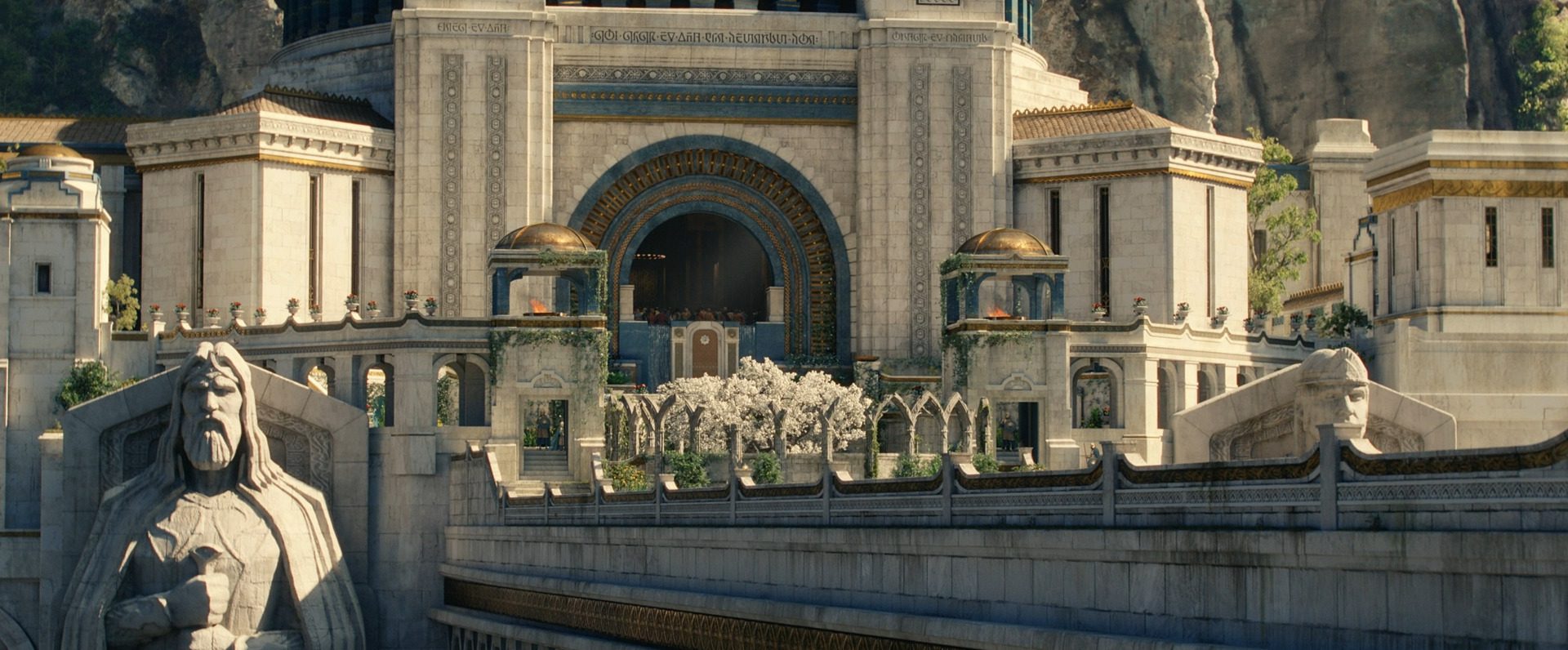
One of the first is the White Tree of Nimloth, another example is the Palantiri – the seeing stones, which we will see in a future episode. Now one thing I noticed when it comes to the white tree is that the architecture around it is pretty much the only thing we see in a state of disrepair. This could be a visual clue of the majority of Numenoreans’ disregard for things that tie them to the Valar and Eldar.
God Eru And Halbrand Failing
When Galadriel tells Halbrand that their meeting was greater than the faith. This implies Galadriel believes Eru Iluvatar, the God of Tolkien’s world brought them together. Now we know in LOTR there are a couple of specific times where Eru does intervene. Sending Gandalf back as Gandalf the White, and possibly when Gollum slips and falls with the ring into the fires of Mount Doom. Now, I don’t think this is indeed the work of Eru. Instead, I think we are seeing how Galadriel is so desperate to find Sauron that she’s convincing herself this encounter is somehow ordained and will result in helping her track down the new dark lord.
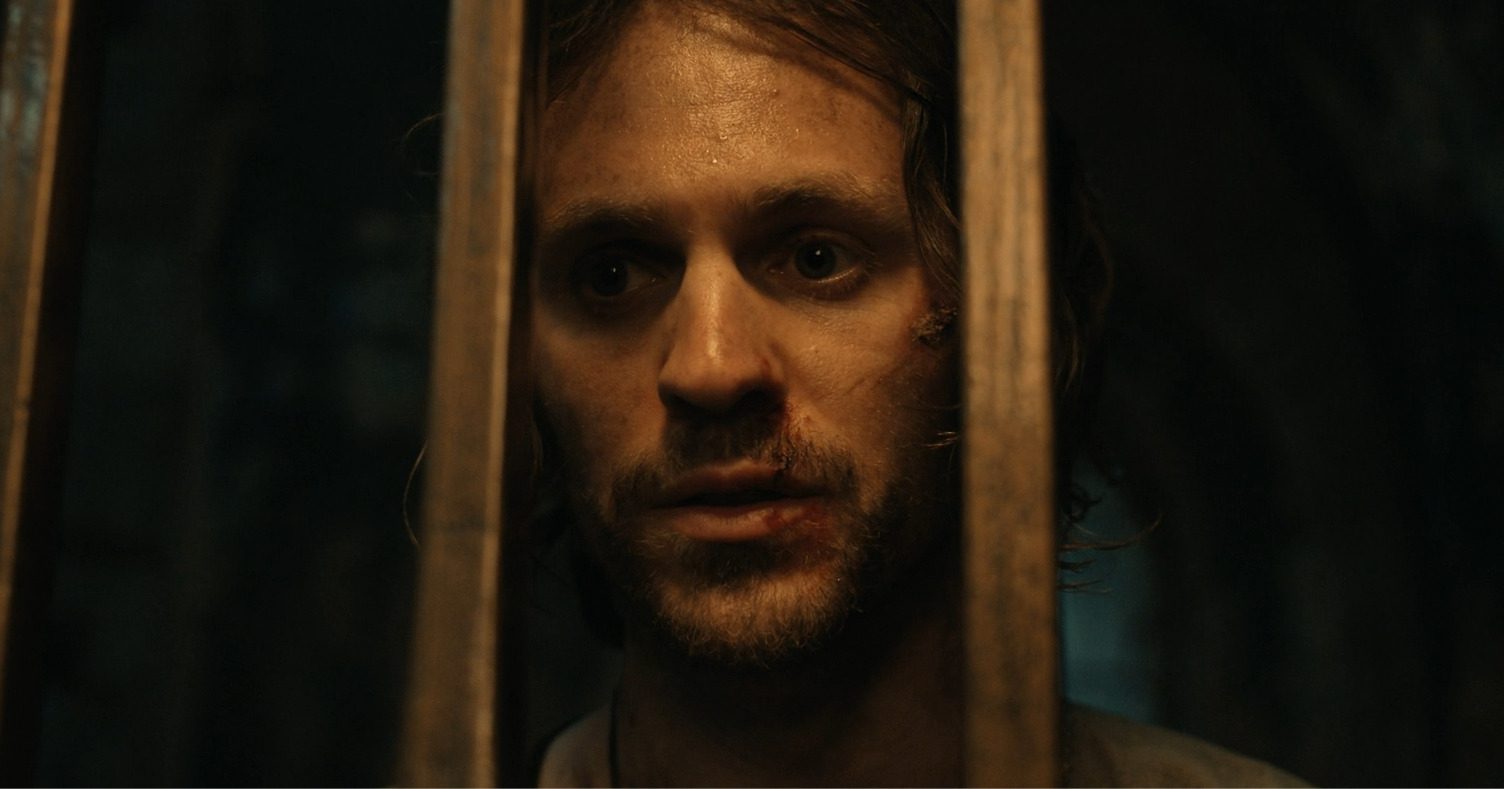
So when it comes to Halbrand, there are a lot of theories out there about him being either Sauron or the Witch-king. There were definitely some moments that made me think of Sauron in this episode, but some others that really have me thinking – and honestly rooting for – witch-king. He seems like an off-kilter version of Aragorn and I could see it being really interesting if he attempts to do the right thing and unite his people against Sauron, but ultimately fails where Aragorn will later succeed.
Míriel’s Great- Great-Great-Grandfather
When Halbrand and Galadriel first arrive in Nmenor in “The Rings of Power,” Queen Regent Mriel is in charge. In Episode 3, Míriel starts talking to Elendil about just the challenge that her people have had with trusting Elves. In her words, “Elves have been forbidden on our coastlines since the time of my grandfather’s great-grandfather.” This feels like a beautifully written throwaway intended to highlight how significant of an issue it is that Elendil decided to bring an elf back to Numenor, but as with everything Tolkien, things go far deeper than that.
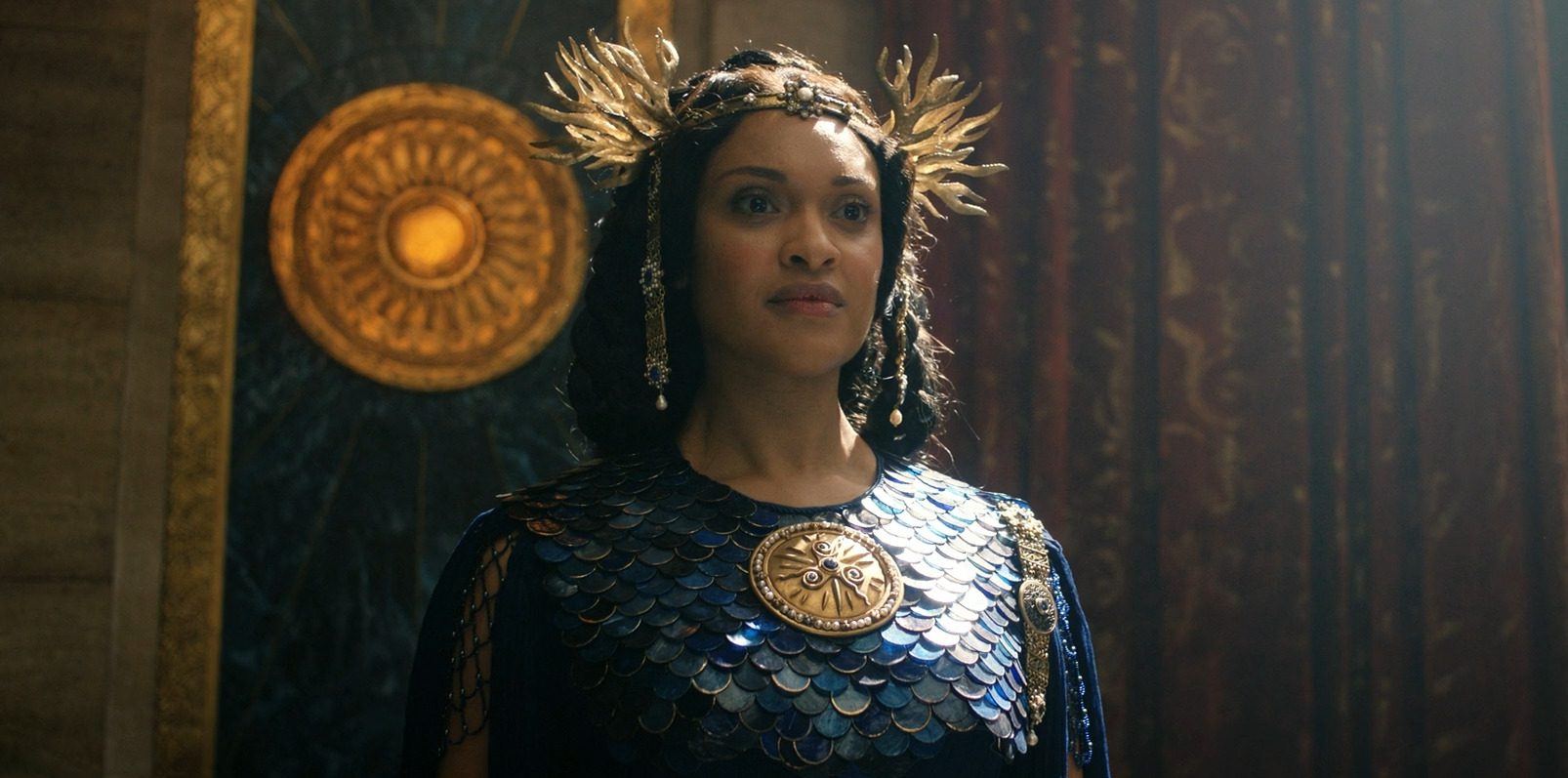
We may quickly climb the family tree to find out who Mriel’s “grandfather’s great-grandfather is” by looking at the author’s books, which track the full line of Nmenórean rulers. It turns out that Ar-Adûnakhôr is a not-so-nice guy. According to Tolkien’s explanation in the book “Unfinished Tales,” “In this era the Elven-tongues were no longer spoken, nor allowed to be taught, but were preserved in secret by the Faithful; and the boats from Eressa came seldom and sneakily to the west shores of Nmenor thereafter.” (The term “Eressa” refers to an Elven region in the West.)
So Mriel’s statement that her — let’s try to remember this correctly — great-great-great-grandfather began the hatred of elves is not something the writers made up on the spot. It’s an intentional reference to a cranky Nmenorean king who ruled for a very long time before the “Rings of Power” story even starts.
Elros And Elrond
When Galadriel and Elendil go to Nmenor’s Western territories, they stop at the Hall of Lore, the very first king of Nmenor Elros’ personal library and knowledge repository. Elros, who is Elrond’s brother and whose family tree includes Men, Elves, and even the heavenly Maiar, is very much a Tolkien original, except for the fact that the particular hall is a creation for the show.
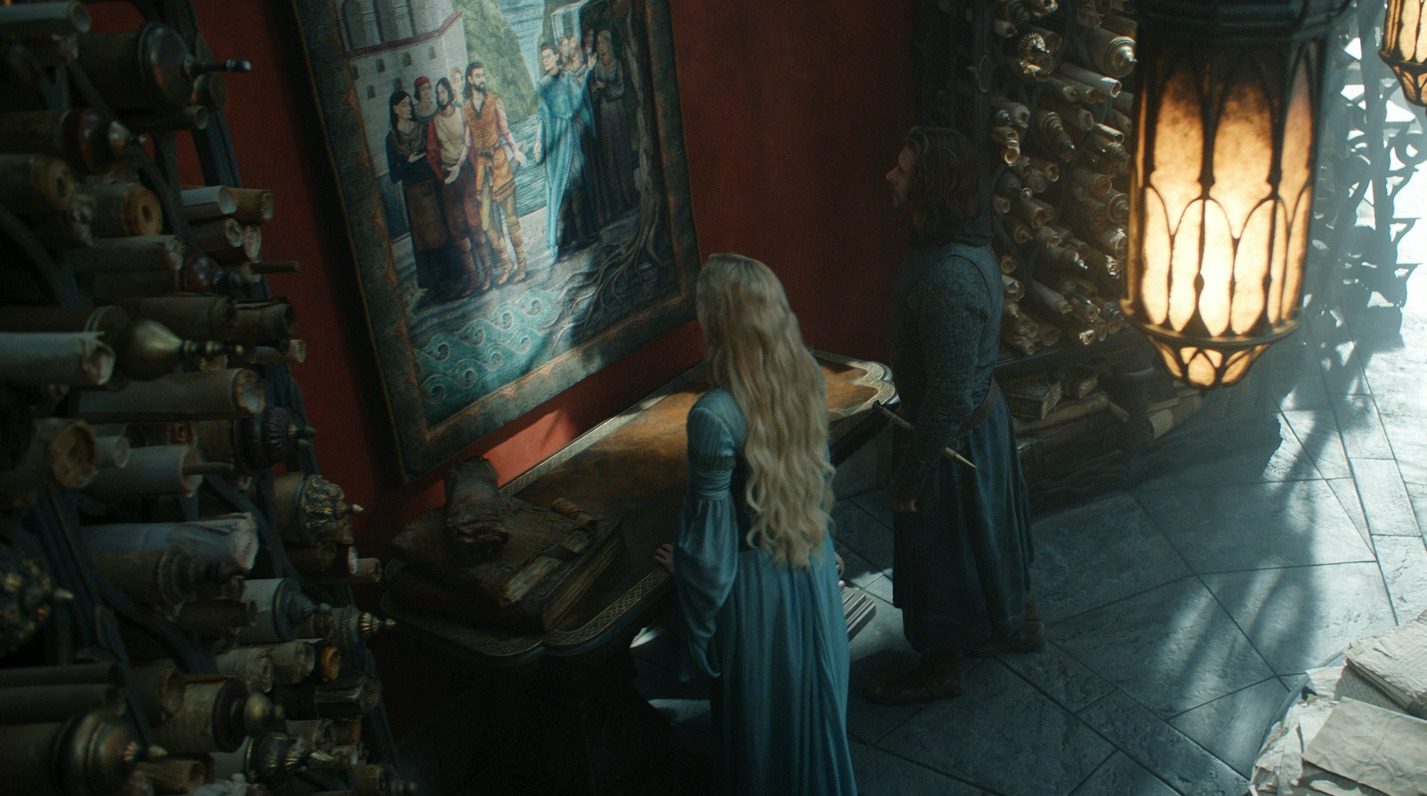
Elros, however, decides to choose the mortality of being a Man over Elrond’s endless life as an elf. Elros not only decides to accept the mystery of the gift of death, but he also grows into a powerful king who founds Nmenor and reigns for five centuries. While Elros’ twin brother is still working as Gil-galad’s Herald in Lindon at the time of “The Rings of Power,” Elros has already been gone for a considerable amount of time. This sets up an interesting scene when Galadriel and Elendil examine a painting depicting identical twins in the Hall of Lore.
Galadriel says that she was familiar with Elros and adds, “But I always felt closer to his brother.” For observant viewers, there is a subtle connection between this and Galadriel and Elrond’s previous friendship (as shown in Episode 1). But there’s more to it than that: In the original story, Elrond would eventually wed Galadriel’s daughter, and together with her, they’ll serve on the White Council and then generally oppose Sauron for millennia. She is far closer to Elrond than is usually assumed.
Man Turned Into Star
Early on in Season 1, the Harfoot chief Sadoc Burrows tells a tirelessly curious Nori Brandyfoot that perhaps the stars are strange. The Stranger, who lands unexpectedly close to the Halfling settlement, is a real embodiment of the ominous words. The Stranger is taken under Nori’s mighty but little wing, and in Episode 3 it is revealed to all the Harfoots that Nori has been helping the stranger.
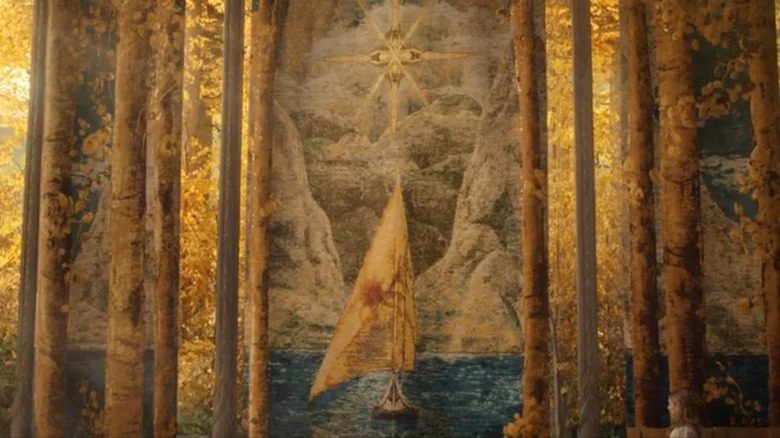
In the aftermath, Sadoc confronts Nori in an inquisitor-style confrontation and taunts her in the presence of the entire clan. When Nori’s father Largo starts speaking, he first remarks on how extraordinary the event is before asking Sadoc, “Have you ever actually heard of creatures falling from the stars?” Sadoc replies, “I’ve heard of beings that were converted into stars, but not the other way around.”
The mention of creatures turning into stars seems random, however, like before, it might be a subtle Easter egg referencing Tolkien’s well-known sailor of the firmament, Eärendil. Before leaving Middle-earth in his ship, the hero has a shining Silmaril attached to his forehead, thus making him a star. This marks the end of his famous First Age career. Even if it seems doubtful that a random Harfoot leader in a remote village would somehow be aware of Eärendil, the line might nonetheless be left behind for those who can find it.
Nori And Bilbo Thinks They Are Not Special
When we last meet Nori, in Episode 3, Marigold confronts her about what she did with the Stranger and asks as to if she believes it was fate and that she is kind of special. The young Harfoot responds, “I understand I’m not special. I am aware that there are many Harfoots in the big, wide world.” The line echoes one that Gandalf said at the conclusion of “The Hobbit,” which will appeal to followers of Tolkien’s legendarium.
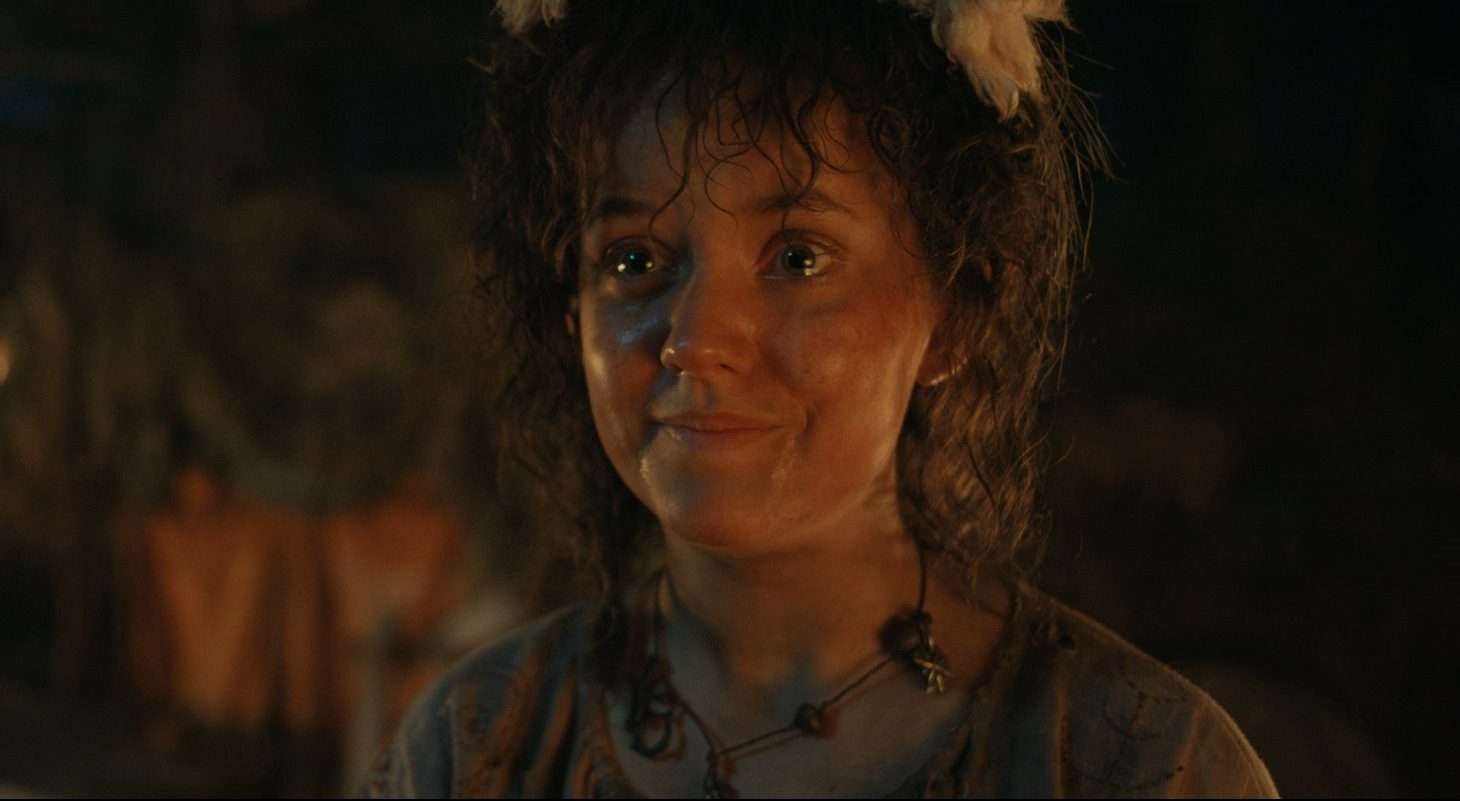
On the final page of that book, Gandalf and a few of the Dwarves return to the Shire to see their burglar bestie. When Bilbo expresses surprise that so many of their dreams had come true, the Grey Wizard responds, “And why shouldn’t they come true? Surely you don’t deny the prophesies, for you had a hand in making them about yourself?”
Gandalf continues to highlight the greater importance of Bilbo’s story by asking, “You don’t really think, do you, that all your adventures and escapes were handled by sheer luck, merely for your own benefit? You are a very wonderful person, Mr. Baggins, and I am extremely fond of you; but you are simply quite a little fellow in a huge world, after all.”
Also Read: Who Is The Stranger In The Rings Of Power Episode 1? The Rings Of Power’s Meteor Man Explained




